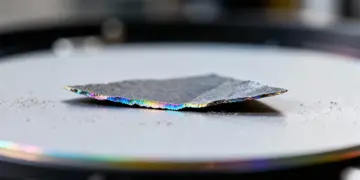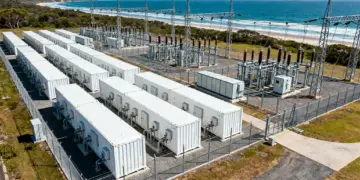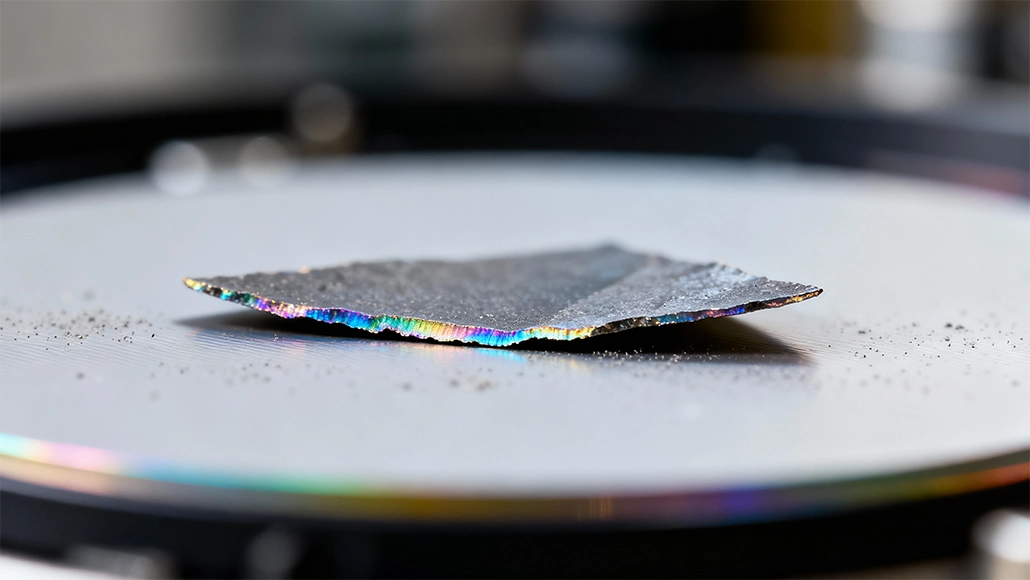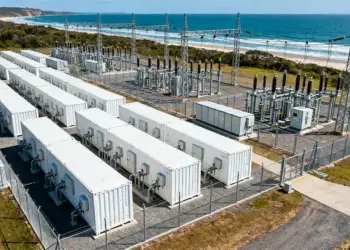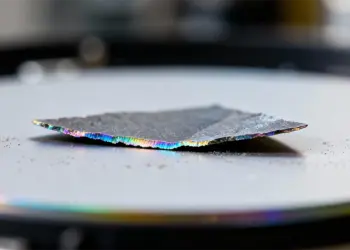Scientists in Germany as well as Israel have found a novel way to study some of the tiniest and, of course, the most promising materials on Earth. It concerns an advance that could very well help create better batteries, electronics that are flexible, and of course clean energy devices.
Scientists have unveiled MXenes, happen to be made up of sheets that are just a few atoms thick. These materials can efficiently conduct electricity and store the energy, and at the same time also interact with the light in ways that could as well make the future technologies much faster and smaller as well as more efficient. However, up until now, the researchers could only study MXenes when it comes to large stacks of overlapping layers. That has probably made it pretty hard to understand what every single layer could actually go ahead and do on its own.
MXenes have been generating excitement for years because of their potential in – from ultrafast-charging batteries and solar cells to screens that are flexible along with water-purification membranes. However, so as to make those ideas real, scientists initially need to understand exactly how such materials behave even at the smallest of scales.
Dr. Andreas Furchner from Helmholtz-Zentrum Berlin, the lead of the research team, and Hebrew University of Jerusalem’s Dr. Ralfy Kenaz have gone ahead and solved that challenge. They went on to use a new optical method named spectroscopic micro-ellipsometry (SME) in order to look at individual flakes of MXene, and that too one by one. The findings went on to be published in the ACS Nano journal, which was peer-reviewed.
The technique happens to work through shining carefully controlled light on the microscopic samples and simultaneously measuring how the light goes on to reflect back. Right from that reflection, scientists can go on to tell as to how well the material goes on to conduct electricity and how its structure happens to affect the performance. Unlike the older methods, SME does not damage the sample and, as a matter of fact, can go ahead and complete a full evaluation in less than a minute.
According to Kanaz, who went on to co-invent the method, what is truly outstanding with this work is that in less than a minute one can go ahead and directly measure the optical, structural as well as electrical properties pertaining to individual MXene flakes- and that too all in a non-destructive way. Normally, the fact is that these measurements happen to need three different instruments and also a lot more time.
How each flake happens to behave
According to Furchner, the new approach goes on to give the scientists a clear picture as to how each flake happens to behave. He adds that measuring how single MXene flakes go on to interact with light enabled them to pinpoint tiny variations in thickness as well as conductivity. He further said that they were indeed excited to see how closely the inferences matched with much slower along with more destructive techniques.
The team also found that when MXene layers go on to get thinner, their electrical resistance grows, which apparently is a critical detail in terms of designing dependable as well as efficient electronic components. The novel technique was also able to match up with the precision of powerful imaging tools like that of electron microscopes, therefore confirming its accuracy.
According to Hebrew University’s Prof. Ronen Rapaport, this work charts a roadmap for integrating MXenes within real technologies by way of offering a direct view when it comes to their intrinsic properties without having the interference pertaining to the stacked layers or impurities. Through refining how one goes on to study these materials, they are indeed paving the way for their usage in energy along with optoelectronic devices.
As per Helmholtz-Zentrum Berlin’s Dr. Tristan Petit, the next-generation nano techniques could also go on to have an even wider effect. He adds that this sort of opens up the new fields of research that were in the past only possible with large as well as expensive X-ray facilities. Now one can do the same sort of work in a regular lab, with a much faster pace.
It is well to be noted that integrating MXenes within real technologies can go ahead and store as well as release electrical energy with too much efficiency, therefore making them promising when it comes to the next-generation nano techniques including the next-generation lithium-ion as well as the solid-state batteries. Due to the fact that they happen to be thin and also bendable, MXenes could go on to power smart clothing, wearable devices, and even foldable electronics. This also happens to make MXenes perfect for usage across supercapacitors, which are the devices that actually deliver a rapid burst of power and at the same time also recharge much faster as compared to the regular batteries.
The fact is that their ability to go ahead and interact with light and also conduct electricity goes on to make MXenes very useful when it comes to solar cells along with the photoelectrochemical systems, which go ahead and convert sunlight into clean energy. It is well to be noted that especially MXenes may very well improve hydrogen production through acting as catalysts as far as the water-splitting reactions are concerned.
Due to the fact that MXenes can very well filter out heavy metals as well as related salts from water, scientists are going ahead and discovering them in terms of desalination membranes along with certain environmental cleanup technologies. Apparently, there are researchers who happen to be also studying MXenes for their potential usage when it comes to drug delivery systems, biosensors, as well as medical diagnostics.
As Dr. Petit goes on to aptly say, this is indeed a powerful demonstration of how partnership as well as advanced physics can go ahead and speed up the material science, and the fact is that MXenes is only the start to all of it.

